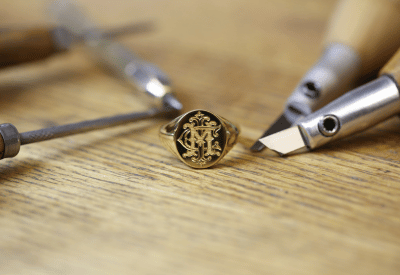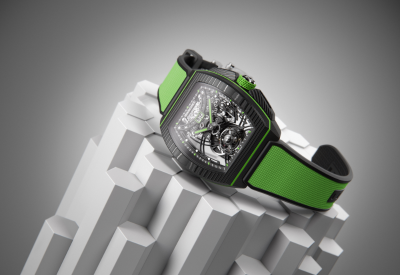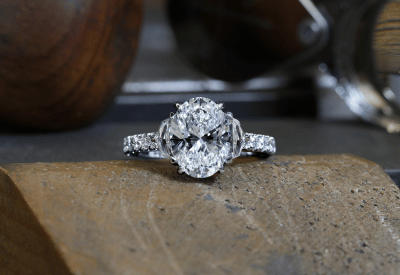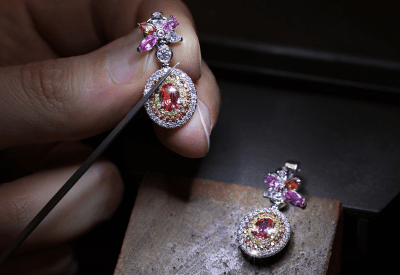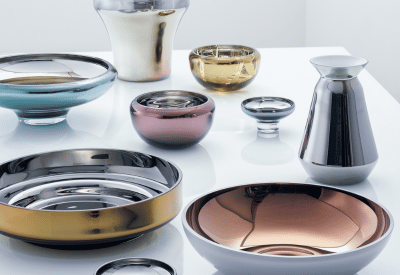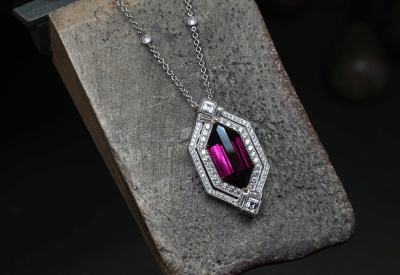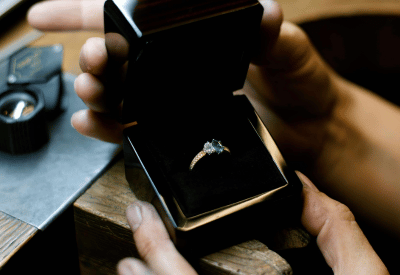WHAT IS ART DECO AND WHERE DID IT ALL BEGIN?
“In olden days a glimpse of stocking was thought of something as shocking. Now heaven knows, anything goes!” Cole Porter’s lyrics from Anything Goes, the perennially popular musical of the 1930s, perfectly summed up the spirit of the interwar years around the world. Wealthy Americans were hosting Jay Gatsby-style parties during Prohibition, the British were adjusting to a society where the aristocracy was slowly being eroded and Sydneysiders were excited by the opening of the Sydney Harbour Bridge that finally linked the two halves of the city.
This spirit of change, innovation and energy was visually united around the globe - from Miami to Mumbai to Melbourne - by a design style that came to be known as Art Deco. It first appeared in 1925 at the International Exhibition of the Decorative Arts held in Paris, but was not known as Art Deco until the 1960s. Even without a label it became the predominant style for the interwar generation and its influence was seen in architecture, fashion, art, furniture, jewellery and design in general. Art Deco moved away from the over-the-top flourishes of the Beaux Arts style and romanticism of Art Nouveau to create a style that spoke to the future - while also drawing on influences from the past.
The style’s distinctive features included strong linear elements, stepped facades and ornamentation that drew its inspiration from sources including Middle Eastern architecture, Ancient Greek and Roman themes and also Ancient Egyptian and Mayan elements. In addition, Art Deco incorporated motifs from the exciting modern age - a time when trans-continental air travel became possible, motor cars became more prevalent and radio sales overtook the traditional family entertainment unit, the piano. These modern motifs included stylised machine patterns like gears and wheels as well as elegant interpretations of sunbursts and flowers.

ZEST, COLOUR AND PLAYFULNESS
“Art Deco manifested itself emotionally with great zest, colour and playfulness in an age that was all about prospering,” wrote cultural and social historian Carolyn McDowall for The Culture Concept Circle. “It was also about fulfilling a deeply felt need for a style that would not be threatened by change, because as it turned out it was adaptable for almost every culture on the planet. In many world cities you will still find marvellous examples of the Art Deco style lurking gloriously. It was definitely all about a hunger for life and a desire for feeling good about self. The clientele were all wealthy, fashionable art-lovers, who enjoyed living in a luxurious environment and, for the moment.”
Art Deco took off around the world and was soon evident in skyscrapers, cinemas, apartment buildings and even the humble suburban milk bar. The architecture of Sydney was no exception - the city was transformed by buildings like the AWA Tower on York St, David Jones Market St store (which was in stark contrast to its original store across the road and hinted at the modern offerings that lay within), Randwick’s Ritz cinema and apartment buildings such as Birtley Towers and Macleay Regis.

ALL MESSED UP AND DOING JAZZ
Life was all about “…being hustled by a modern crowd into the modern city streets, where electric trams, motor cars, concrete and steel, colour and human beings seem all messed up and doing jazz,” wrote art critic Jean Curlewis in 1928, when Art Deco and all it entailed was just starting to stretch its newly awakened limbs. “The jazz of moving shapes makes patterns in the streets whilst up above against the sunset sky is the jazz-like serrated edge of the up and down masses of concrete and steel. What we cannot get in romantic, old-world subjects in the modern youthful city…must be turned to account in exploiting its modern possibilities.”
Sydney was now a city of almost 1 million people, the airport at Mascot had opened at the start of the decade (by 1935 intrepid travellers could fly from Brisbane to London in just 12 ½ days) and work had begun on the Harbour Bridge – a symbol of the upbeat mood that had swept the nation following the end of the war. Tilly Devine and Kate Leigh were at the height of their reign as the queens of the inner-city’s dark underbelly and were busy looting diamonds rather than paying for them. Thrillingly, the first section of the electric underground train between St James and Central was opened and the fashion-forward Prince of Wales (the future King) made his tour of Australia in 1920 and sent female hearts fluttering.

THE SYDNEY SMART SET
“Smartness and Australia, gaiety and Australia, seem hopeless contradictions,” wrote London-based ballet critic Arnold Haskell after visiting in the mid 1930s. Yet, “Sydney’s smart set would be a smart set in any capital,” he admitted. “If I could whisk you off to Sydney, one of the first sights would be the lounge of the Hotel Australia or a gala night at Romano’s.”
Based on Hunter St, Fairfax & Roberts were perfectly placed to design and craft the jewellery of the Art Deco era, which began to combine materials such as jade, onyx, enamel and coral with more traditional stones and metals in designs that were sleek, modern and exquisitely crafted. So highly regarded was Fairfax & Roberts that when the Prince of Wales visited Australia, they created a sterling silver kangaroo pin to present to the Prince, who was to develop a reputation as a keen jewellery connoisseur when purchasing gifts for his future wife Wallis Simpson, whose collection was legendary.

Glamorous British It-girl of the time Nancy Cunard set the fashion for wearing several bangles at once – they suited the bare arms that were now in vogue and made a wonderful clatter on the dance floor. As hemlines were shortened, thanks to designers like Coco Chanel, women’s hair was bobbed as well – leading to a desire for elaborate jewelled hair ornaments and glittering dangling earrings that were no longer hidden by high-maintenance hairstyles. Luxurious on-trend jewellery like this may well have been worn to Sydney society events such as the wedding of visiting Italian opera stars Toti Dal Monte and Enzo de Muro Lomanto at St Mary’s Cathedral - an event that was watched by a crowd of 25,000 people who gathered in College St, or perhaps to the wedding of Warwick Fairfax to Miss Marcie Wilson in March 1928, with six elegant bridesmaids in attendance and a reception at Yandooya in Rose Bay following the ceremony.
"The real Sydney is a cosmopolitan conglomerate" -BAGOT GREY

THE COSMOPOLITAN ENERGY OF ART DECO SYDNEY
“The real Sydney is a cosmopolitan conglomerate,” wrote Bagot Grey in 1935 in then recently launched Walkabout magazine. “It is without doubt the least Australian city in the Commonwealth. I believe that it is destined to become as foreign to the rest of the continent as New York is to the United States.”
This cosmopolitan energy in Sydney drew on Art Deco influencers from around the world. Polish artist Tamara de Lempicka’s work is closely associated with Art Deco and her hedonistic, high-society lifestyle encapsulated the fizz and bubble of the age. Her “soft-cubism” portraits were highly sought after at the time and are still prized by collectors now. Jeweller Rene Lalique was known for his exquisite work with glass, which ranged from small-scale jewellery to large installations - like the 200-table dining room aboard the Normandie, an ocean liner launched in 1935. Huge chandeliers, designed by Lalique, illuminated the hall, which was a glittering tribute to the excesses of the period.

THE TIMELESS ELEGANCE OF ART DECO
While it is no longer a globally dominant style, Art Deco is still a popular era of design - especially in interior and jewellery design. Music and film legend Barbra Streisand undertook an extensive Art Deco renovation of one of the five houses on her Malibu compound in the 1970s - much of her extensive collection (including a painting by Tamara de Lempicka and many Lalique pieces) was sold at auction in 1994. More recently, architect and designer Blainey North launched a collection of Deco-inspired furniture that has been used in domestic and commercial projects around the world. The collection of tables, chairs and cabinetry, “oozes the character and style of 1920s writers and movie stars who represent the luxury, glamour and detail of the Art Deco period of design. Our furniture is unique in its use of gloss timber, metal, fabric and leather. It makes you feel gorgeous and special.”
“oozes the character and style of 1920s writers and movie stars who represent the luxury, glamour and detail of the Art Deco period of design.” -BLAINEY NORTH

A beautiful and contemporary take on Art Deco can be seen in Australian actress Melissa George’s recently listed Manhattan apartment. The “French Art Deco” apartment is in the Flatiron district and was for sale fully furnished with exquisite Deco pieces including piped armchairs, meticulous cabinetry and artwork of the time.
Fairfax & Roberts is now at home in one of Sydney’s landmark Art Deco buildings - the MLC Building designed by architects Bates, Smart & McCutcheon. Built in 1938, the building adds significantly to the character of Martin Place and showcases “the best example in Australia of the exterior use of Egyptian-derived motifs in such buildings” according to NSW Government Office of Environment and Heritage. Being housed in such a significant Art Deco building serves to reinforce Fairfax & Roberts commitment to the era - a commitment that is clearly evident in recent collections including The Lantern and Modèle as well as bespoke pieces for clients who appreciate the timeless elegance of Art Deco style.
The in-house designers and artisans of Fairfax & Roberts looked to the boulevards and boites of Paris in the 1920s when they were designing and crafting the pendants, earrings and bangles that make up the Modèle collection. The Art Deco influence is obvious in the distinctive fan shape that runs through the Modèle collection while the bespoke options and bold lines anchor it firmly in the present. The Lantern collection was inspired by the Chinese lantern flower and the deceptively simple curves that make up the cage of the piece also conjure up the sunburst motif that was so popular in Art Deco visual arts.
ECHOES OF THE PAST LOOK TO THE FUTURE
It was during this global design era of hope and exuberance that Fairfax & Roberts consolidated their reputation as the jewellers of choice for many of Australia’s most discerning families. Their commitment to design integrity and innovation, coupled with their highly skilled artisans and access to the world’s finest gems and exemplary customer service has ensured that Fairfax & Roberts turned history and tradition into a path for the future.
EXPLORE ART DECO JEWELLERY
book a consultation




